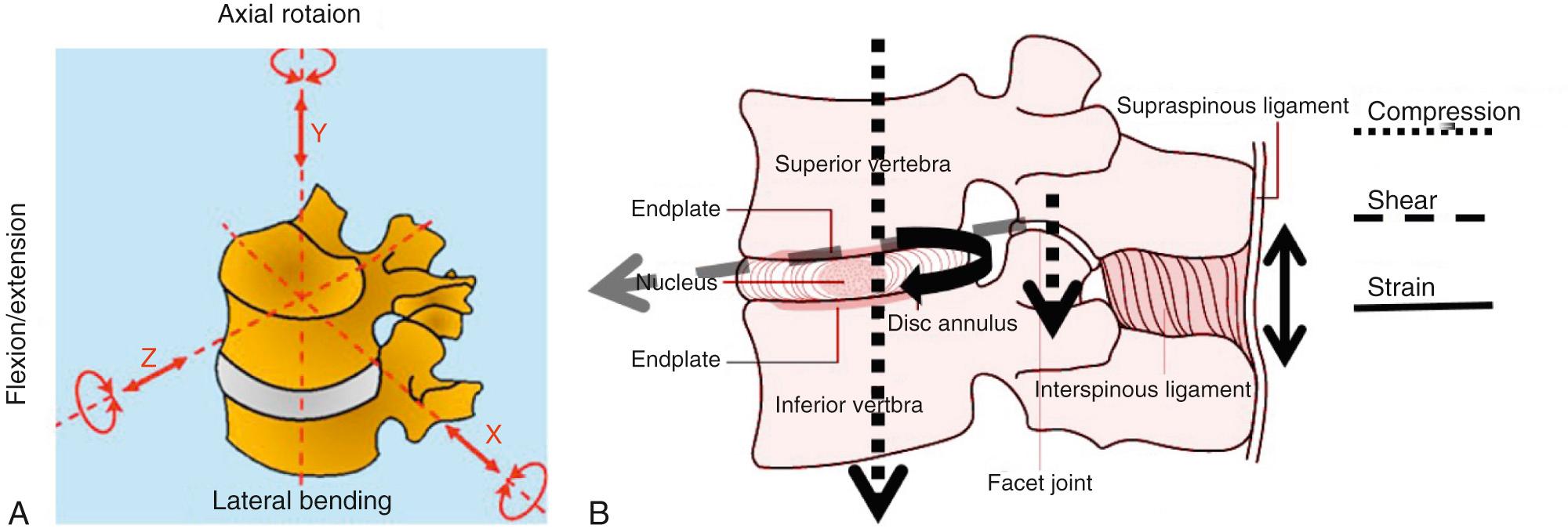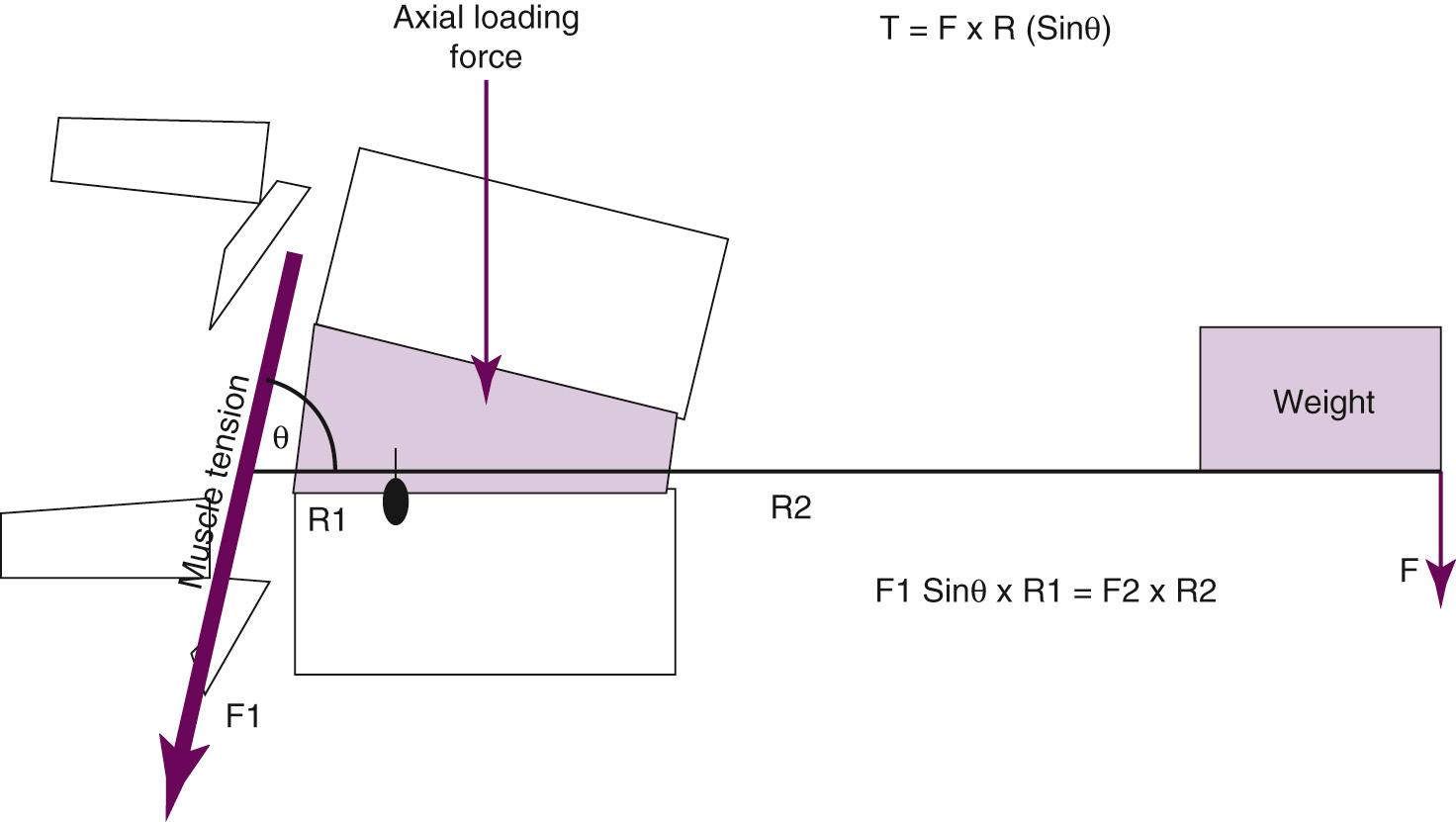Physical Address
304 North Cardinal St.
Dorchester Center, MA 02124
The primary biomechanical functions of the spinal column are to support the substantial loads induced during activities of daily living and protect the spinal cord while allowing physiologic mobility.
This chapter presents a framework for understanding these biomechanical functions of the spine by first discussing the stability of the osteoligamentous spinal column and the role played by the muscles. The chapter progresses to a discussion of the stability of a healthy spinal segment, followed by the effects of injuries, degeneration, and surgical procedures on load sharing between components of a spinal segment.
The chapter presents a brief discussion of the biomechanics of surgical decompression and spinal fusion implants.
Spinal orthoses protect the spine in cases of instability related to degenerative changes that result from aging and in postoperative situations to facilitate healing of surgical constructs used to stabilize gross spinal instability. The orthosis should restrict the gross flexion or extension, lateral bending, and axial rotation of the trunk to limit compressive loading, straining, and shear stresses on the unstable spine until healing is achieved. Understanding how movement and force loading stresses the spinal column, how the spinal column is stabilized under stress, and when stabilizing mechanisms are vulnerable to failure is essential for using orthoses to treat spinal disorders.
A spinal motion segment is the smallest functional unit of the osteoligamentous spine and exhibits the generic characteristics of the spine. The functional spinal unit (FSU) consists of a three-joint complex; anteriorly vertebral bodies articulate with an intervertebral disc (a fibro-cartilaginous joint), and posteriorly two facet joints (synovial joints) articulate on either side of the spinal canal. The three-joint complex moves in three planes: sagittal flexion and extension (F/E), lateral bending (LB), and axial rotation (AR) ( Fig. 5.1A ). Coupling of these movements allows multidirectional motion of the trunk in three dimensions. Trunk movements produce compressive loading forces directed axially through the three-joint complex, strain forces on discs and ligaments placed under stretch, and shear forces directed horizontally between discs and vertebral endplates ( Fig. 5.1B ).

Axial compressive loads across the three-joint complex are produced by (1) gravitational forces due to the mass of body segments, (2) external forces and moments generated by a physical activity, and (3) muscle tension. The greatest forces are produced by muscle tension. Displacement of the gravitational force by flexion or bending produces a torque that must be balanced by an equal and opposite torque. In the example of bending and lifting tasks, an object carried at a distance from the axis of rotation of the spine creates significant torque. Dorsal paraspinal muscles that are relatively close to the spinal axis must generate high-tension forces to generate a matching torque to maintain stability of the segment. Thus muscle tension forces can amplify the compressive load across intervertebral segments generated by mass and gravity alone ( Fig. 5.2 ).

Compressive forces across the spine during common physical activities are estimated by kinematic and electromyographic data in conjunction with three-dimensional biomechanical models and validated by in vivo measurements range from 200 to 300 N during supine and recumbent postures to 1400 N during relaxed standing. Forward flexion doubles intradiscal pressure and increases by fourfold to fivefold when lifting a 20-kg weight in flexed posture. Loads can increase substantially in more extreme activities such as contact sports and weightlifting. The human cervical spine also withstands substantial compressive preloads in vivo. Cervical preload approaches three times the weight of the head because of muscle coactivation forces in balancing the head in the neutral posture. The compressive preload on the cervical spine increases during F/E and may reach an estimated 1200 N in activities involving maximal isometric muscle efforts.
The intervertebral disc is the major anterior compressive load-bearing element. The disc consists of an annulus fibrosus, 10 to 20 circumferential concentric lamellae, surrounding a central gelatinous fluid, the nucleus pulposus. Under direct axial compression the annulus fibrosis bulges out radially in all directions, generating tension. Even tension around the annulus directs the fluid nucleus pulposus centrally within the disc, permitting load transmission from vertebra to vertebra to be distributed evenly across the inferior vertebral endplate ( Fig. 5.3A ). If a load is applied with the FSU in flexion, the superior endplate transmits compression to the anterior annulus. The anterior annulus bulges under compression while the posterior annulus undergoes stretching, creating a pressure differential. The nucleus pulposus flows posteriorly, balancing the pressure between the compression and tension sides, maintaining even pressure across the inferior endplate despite uneven loading forces from the superior endplate ( Fig. 5.3B ).

Facet joints provide a posterior load path and determine the limits of motion in the FSU. Facets in the lumbar spine carry 10% to 20% of the compressive load in a neutral upright position. Load transmission through the articular facet surfaces as well as through the tips of the inferior facets in extension relieves some of the load on the intervertebral disc, whereas flexion increases disc loading and offloads the facets.
Become a Clinical Tree membership for Full access and enjoy Unlimited articles
If you are a member. Log in here